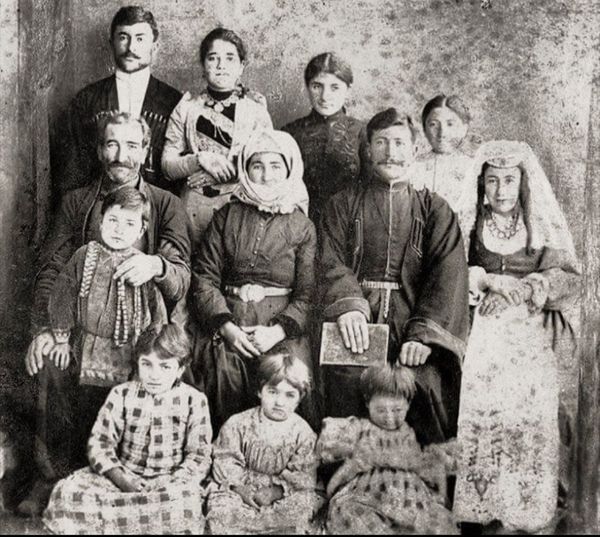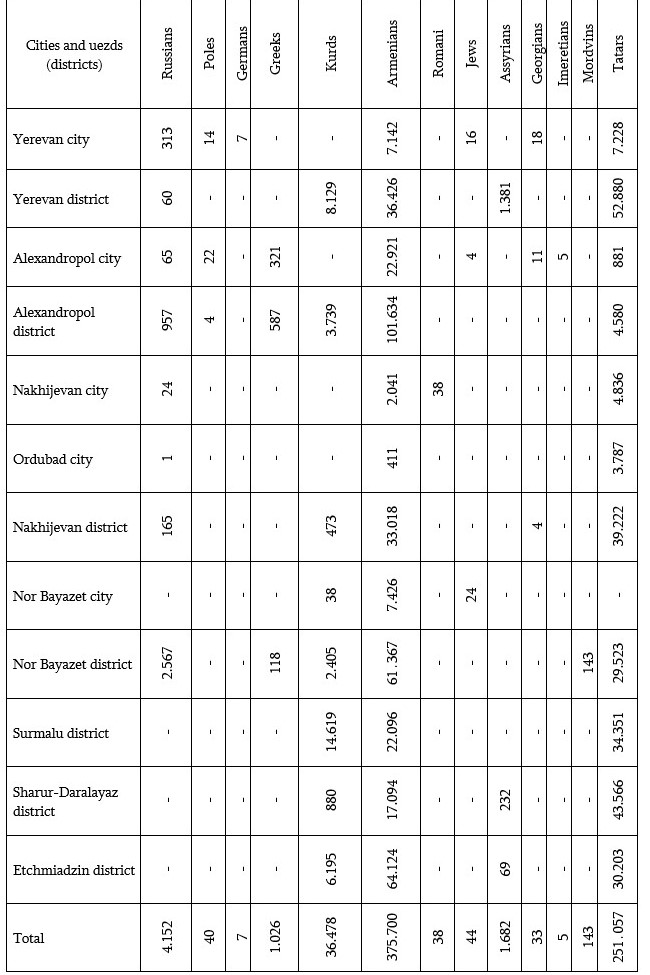2025
2025
2024-08-12

In 1893, by order of the Transcaucasian Statistical Committee of the Civil Department of the Caucasus Governorate, statistical data on the population of Transcaucasia was published based on the 1886 family lists[1].
On February 24, 1886, based on the conclusion of the State Council and approved by the Russian Emperor, the compilation of family lists for the entire bourgeois class, peasant and foreign population of Transcaucasia and the North Caucasus began. The form of these lists was to be approved by the head of the Civil Department of the Caucasus Governorate, with the agreement of the Ministers of Internal Affairs and Finance. The head of the Civil Department of the Caucasus Governorate, Adjutant General Prince Alexander Dondukov-Korsakov, entrusted the development of the form and rules for family lists to the Caucasian (later Transcaucasian) Statistical Committee. Members of the Supreme Council, governors and regional administrators, and other competent individuals were to participate in the committee's work.
The revised form of family lists by the Committee was approved by the Governor-General on April 21, 1886.
The compilation of family lists for the Transcaucasian population began in May 1886 and was completed by the end of the same year. By order of the Governor-General, the processing of materials submitted by the Transcaucasian provincial statistical committees was entrusted to the Committee's Chief Secretary, Editor-in-Chief, and State Counselor Nikolai Seidlitz. After familiarizing himself with the results obtained from the family lists and presenting tables on the population of Transcaucasia and its confessional affiliation to the main authority of the region in the same year, the Chief Secretary presented a draft compilation of the lists to the committee on December 17, 1886. According to this draft, it was important to include the following data for each city and village: the number of households, the number of male and female inhabitants, the distribution of each gender by nationality, religion, and social class, the male population by age, family language, literacy and education, distribution by household occupation, and information about the property of cities and villages.
On May 19, 1887, the Governor-General approved the aforementioned draft. The Committee proceeded to process the materials from the family lists. The necessary information was mandatorily submitted by the governors of provinces and regions.
According to the 1886 family lists, Yerevan province had 670,405 inhabitants.
The total male and female population of the cities in Yerevan province (Yerevan, Alexandropol, Nakhijevan, Ordubad, Nor Bayazet) was 57,594 people. By nationality, it had the following composition: Russians - 403, Greeks - 321, Kurds - 38, Armenians - 39,941, Tatars - 16,732, other nationalities (Georgians, Imeretians, Poles, Germans, Jews, Gypsies) - 159 people.
The total male and female population of the districts in Yerevan governorate (Yerevan, Alexandropol, Nakhijevan, Nor Bayazet, Surmalu, Sharur-Daralagez, Etchmiadzin) was 612,811 people. By nationality, it had the following composition: Russians - 3,749, Poles - 4, Greeks - 705, Kurds - 36,440, Armenians - 335,759, Assyrians - 1,682, Georgians - 4, Imeretians - 143, Tatars - 234,325 people.

In the 1886 family lists, among the Turkic nationalities are mentioned Ottoman Turks, Azerbaijani Tatars, Northern Tatars (Nogais, Kumyks), and Kazan Tatars. By Azerbaijani Tatars, they meant the residents of Turkic origin who had settled in Transcaucasia from the northwestern Iranian province of Atrpatakan. It is interesting to consider what principle the committee followed when listing the order of nationalities in the tables.
The aforementioned statistical data show that the Armenian population predominated in both the cities and districts of Yerevan governorate.
[1] Свод статистических данных о населении Закавказскаго края, извлеченных из посемейных списков 1886 г.․